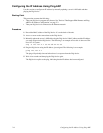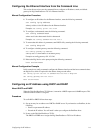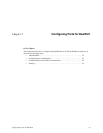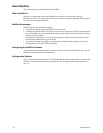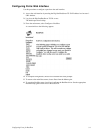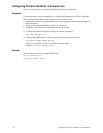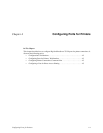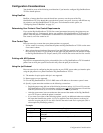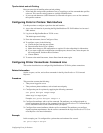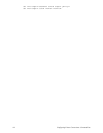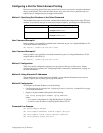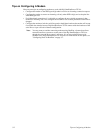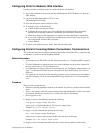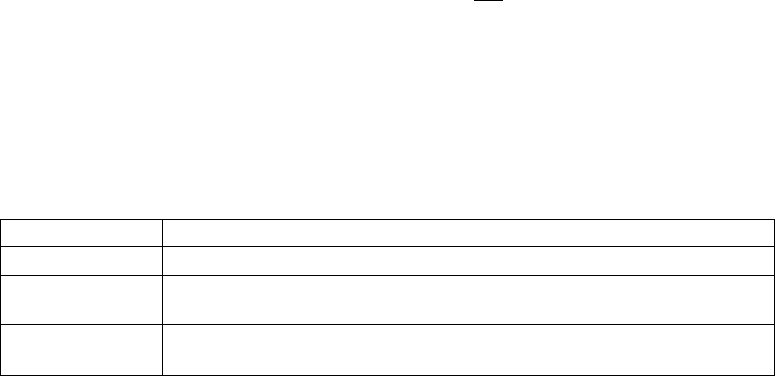
4-2 Configuration Considerations
Configuration Considerations
You should be aware of the following considerations if you intend to configure Dig One/PortServer
TS 2/4 to handle printers.
Using RealPort
RealPort, a feature that allows network-based host systems to use the ports of the Dig
One/PortServer TS 2/4 as though they were the host system’s own ports, is an easy and efficient way
for printers to use Dig One/PortServer TS 2/4 ports. For information on this option, see
"Configuring Ports for RealPort" on page 3-1.
Determining Your Printer’s Flow Control Requirements
If you set the Dig One/PortServer TS 2/4 flow control parameters incorrectly, the printer may not
print all data sent to it. Consequently, before you configure a Dig One/PortServer TS 2/4 port for a
printer, check the printer’s documentation to determine if it uses hardware flow control, software
flow control, or no flow control at all.
Flow Control Tips
Here are some tips to ensure that your printer performs as expected:
• If flow control is necessary, ensure that the printer and Dig One/PortServer TS 2/4 use the same
flow control scheme.
• Most printers that use hardware flow control issue the DTR (data terminal ready) signal when
they are ready for data. If so, the DTR pin on the cable from the printer must be wired to an input
on the Dig One/PortServer TS 2/4 port (usually CTS or DCD) that can be used for flow control.
Printing with AIX Systems
Digi does not recommend using lpd to print multiple jobs to a Dig One/PortServer TS 2/4-attached
printer from an AIX print spooler because this may cause the print job to time out.
Using the lpd Protocol
Here are some tips for configuring the print spooler on your UNIX system when you intend to print
using the lpd protocol to a printer attached to Dig One/PortServer TS 2/4:
1. The number of copies option with lpr is not supported.
2. Banner pages are not supported.
3. Give the Dig One/PortServer TS 2/4’s DNS name or IP address as the remote system’s name.
4. Specify a queue name that conforms to the following conventions:
• Begin the queue name with one of the following character strings: (a) Use ascii if you want
Dig One/PortServer TS 2/4 to substitute carriage return and
line feed characters for each line
feed the system sends. (b) Use raw if no substitution should be performed.
• After the queue name, insert an underscore character and the number of the Dig One/PortS-
erver TS 2/4 port to which the printer is attached.
• If you want to use either of the following options, specify an additional underscore and then
the letter that identifies the option: (a) Use f to append a form feed character to the end of
each file in a print job (b) Use d to add a Ctrl-d to the end of each file in a print job. (This is
often required by PostScript printers.)
Examples
String Result
ascii_1 Prints to port 1 and translates CR to CR/LF.
ascii_8_f Prints to port 8, translates CR to CR/LF and prints a form feed at the end
of the job.
raw_1_d Prints to port 1 with no translation and appends a Ctrl-d to the end of the
print job.



